
02 Apr Latvia – Travel Guide
Latvia Guide
We had a week to discover Latvia and see as much of this Baltic State as possible. Our first few days were spent exploring Riga, but we had also hired a car and had planned three daytrips from the capital. Latvia is a relatively small country, with a decent road infrastructure which is a great deal quieter than we are used to. Perhaps it is just as well that there was not much traffic, since, coming from the UK, we are more used to driving on the “wrong side of the road”.
Our first excursion took us North-West, into the Kurzeme Region, along the Gulf of Riga up to the raw beauty of Cape Kolka, then along the coast down to the port of Ventspils, then back inland to one of the old capitals of Courland, the quaint Kuldiga.
The next journey took us East of Riga, into the Vidzeme Region and the beautiful ancient forests of the Gauja National Park. Our itinerary took us to the medieval towns of Cesis and Sigulda and gave us a great introduction to Latvian history and culture.
The third road trip brought us deep into the Zemgale Region, as well a quick dip into Lithuania! Thanks to the Schengen Agreement, we were able to seamlessly flit between the two countries, which allowed us to visit the haunting Hill of Crosses near Siauliai, before heading back into Latvia and checking out the delights around Bauska.
3 Unmissable Attractions of The Kurzeme Region:

Cape Kolka – This horn of land that projects into the sea, providing the dividing line between the Baltic Sea and the Gulf of Riga, is an unspoilt, natural paradise. Prized by the Latvians for its endless beach, Cape Kolka is very popular during the summer months. Yet during our trip in May, we almost had the beach to ourselves since the temperature was bitingly cold and a brief snowy blizzard had also swept through the area. Still, in the right conditions Cape Kolka offers the family a great day out in nature.
Address: 3275, Kolkas pagasts, Latvia

Kuldiga District Museum – Said to be housed in the Russian Pavilion from the 1900 Paris Exhibition and relocated to Kuldiga, the museum provides an excellent insight into the life of a well to do family at the beginning of the 20th century. We also found that the museum was set in a lovely small sculpture park, which was a pleasure to walk around.
Address: Pils iela 5, Kuldiga 3301, Latvia
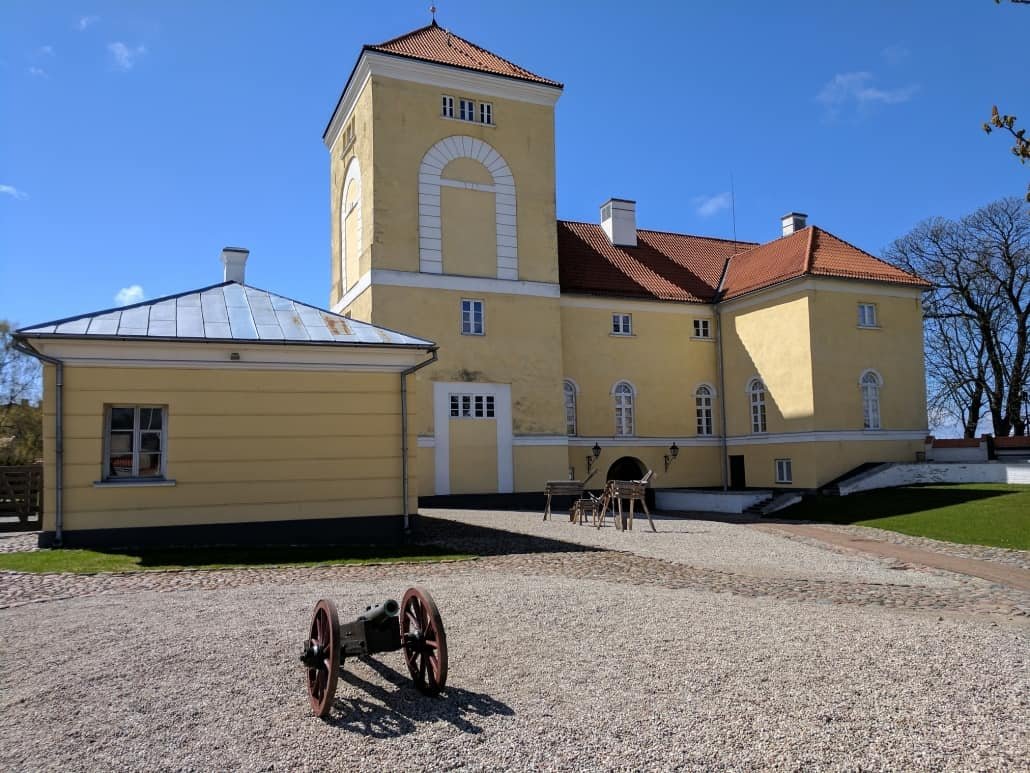
The Castle of the Livonian Order – The Castle of the Livonian order is the oldest preserved building in Ventspils, being built in the second half of the 13th century. The castle has had many uses over the years and ceased being a military base when the Soviet garrison left the castle in 1983. Today the castle houses the Ventspils Museum, which gave us an interesting breakdown on the history of the castle, Ventspils and the surrounding area. Set aside at least an hour for your visit, and we can recommend a coffee or light meal at the nearby Ostas 23 café once you are finished.
Address: Jana iela 17, Ventspils 3601, Latvia
5 Hidden Gems of The Kurzeme Region:
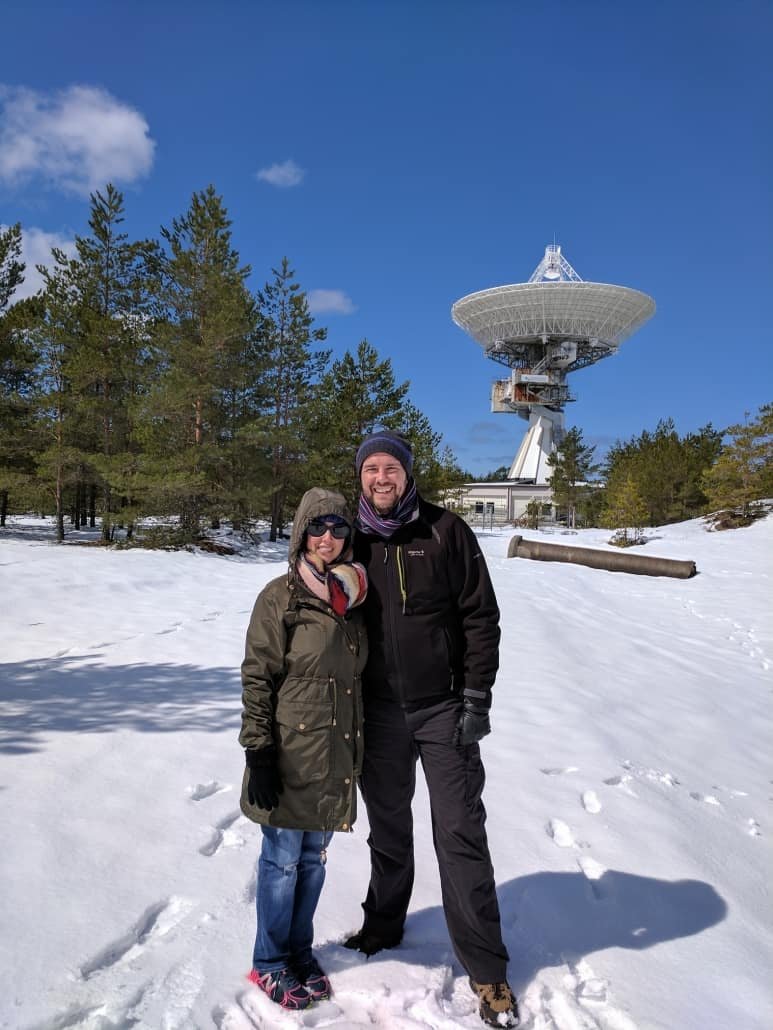
Ventspils International Radio Astronomy Center – For many years following the building of this radio telescope in the 1960s, this site was top secret and unknown to NATO. The site, code-named “Little Star”, was built by the Soviet Navy to eavesdrop on the enemy. Nowadays, however, the University of Ventspils runs the site and carries out research into astronomy and astrophysics. If you contact the university, you can arrange for a student to guide you round the facility. Tours were unavailable during the day of our trip, but we gained an appreciation for the size of the radio telescope, which is a massive 32 metres in diameter, by walking up to the perimeter fence. We also managed to have a snowball fight in front of the telescope, but that’s another story!
Address: Irbene, Ance parish, LV-3601, Latvia

Kuldīga Brick Bridge – Who knew that the longest brick-built bridge in the world was in Kuldiga, Latvia? We certainly didn’t until we researched our trip. The bridge was built in 1874 and is 164 meters long, with seven spans of brick vaults. The bridge is also known for its ‘race of the naked’ which is held annually on Midsummer night. Needless to say, that in chilly May, we did not entertain running our own version of the race!
Address: Baznīcas iela, Kuldīga, Kuldīgas pilsēta, LV-3301, Latvia

St Catherine’s Church (Kuldigas Sv. Katrinas Baznica) – St Catherine’s Church was originally built in 1252 and we found its baroque style wood carvings on the altar quite impressive.
Address: Bazn cas iela 31, Kuldiga 3301, Latvia

Venta Waterfall (Ventas Rumba) – Kuldiga continues to be a record-breaking location. Not only does this little town have the world’s longest brick-built bridge, but Kuldiga also boasts the widest waterfall in Europe. However, we couldn’t help laughing when we saw the waterfall – it may be very wide, but the drop must only be just over a metre! Still, it is a lovely area to stroll around.
Address: Kuldīgas pilsēta, Latvia

Orthodox Church of Saint Nicolay (Ventspils Sv. Nikolaja pareizticīgo baznīca) – This stunning little Orthodox Church actually looks a lot older than it is. The church was only built in 1901, but in a style more prevalent in the 17th century. Its outside beauty is also matched with its rich interiors.
Address: Plosta iela 10, Ventspils, LV-3601, Latvia
3 Unmissable Attractions of The Vidzeme Region:

Turaida Castle – The partially preserved remains of Turaida Castle sit proudly atop a high ridge overlooking the Gauja National Park. Construction began on the castle in 1214 and it was to become a very important centre of power in the region. The castle has many interesting displays and the view for the Main Tower is excellent.
Address: Turaida Castle, Sigulda, Latvia

Folk Song Park – Next to Turaida Castle is the culturally important Folk Song Park. The park was opened to the public on July 7, 1985, in honour of the 150th anniversary of the birth of folklorist Krišjānis Barons and with a performance of one of the folk songs that he collected – “I Stood and Sang Atop a High Hill.” Very quickly the park became a focal point of the Latvian Singing Revolution, which soon led to Latvia’s independence in 1991. The revolution tapped into the culture and history of Latvia, expressed through song, and became a significant peaceful protest against Soviet oppression. The park has a special place in Latvian hearts, and it is an attractive place to walk around and is punctuated by massive sculptures.
Address: Krimuldas pagasts, LV-2150, Latvia

Cēsis Medieval Castle and Manor House – This impressive Teutonic Order castle was built around 1214 and was the most powerful castle in the region. Originally built for the Livonian Brothers of the Sword, the castle’s most infamous episode occurred in 1577 when 300 people sought refuge in the castle from the Russian army of Ivan the Terrible. So scared were the people that they eventually chose to commit suicide and blow themselves up with gunpowder! The castle is in a partly ruined state and is a great place to explore. The castle’s history is explained in the Cesis Castle Manor House, which is right next to the castle. The manor is not as old as the castle, having been built in 1761, which was not long after the castle had been abandoned. The museum housed in the manor was founded in 1925 and with more than 155 000 collection objects it is one of the largest municipal museums in the country. The permanent exhibition “Cēsis – a symbol of Latvian history” is located in the Manor House, which shows the role of Cēsis in Latvian history.
Address: Pils Laukums 9, Cesis 4101, Latvia
5 Hidden Gems of The Vidzeme Region:
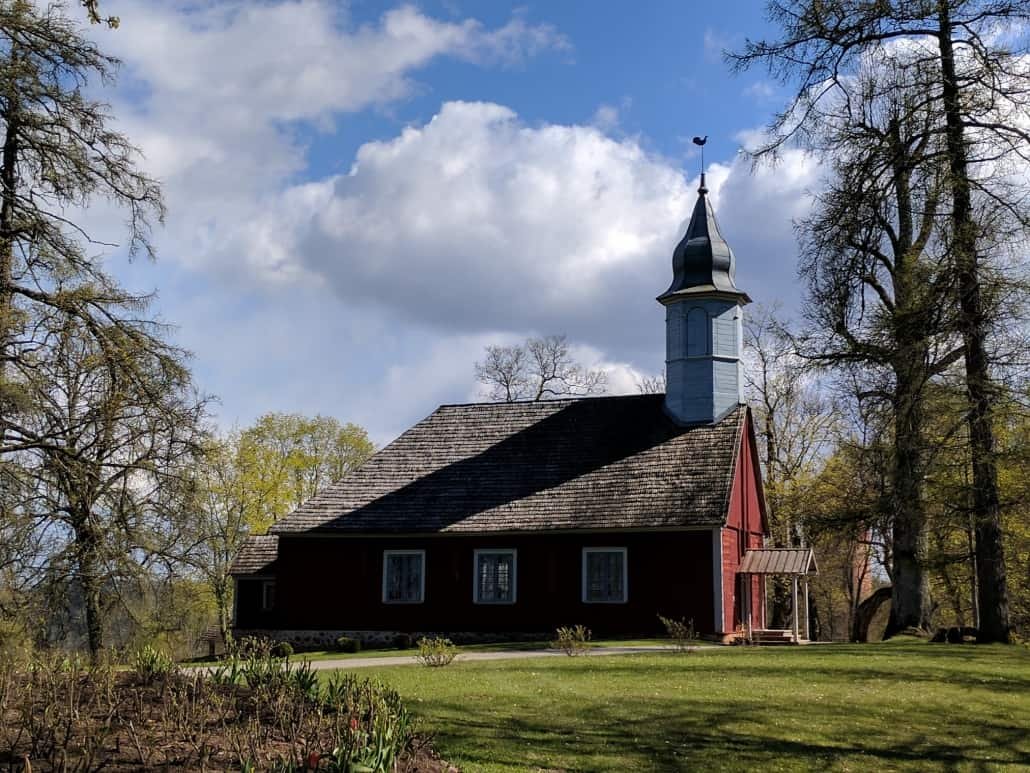
Turaida Lutheran Church (Turaidas Evanģēliski Luteriskā baznīca) – On the path to Turaida Castle, we made time to visit the quaint wooden Lutheran Church, which was built in 1750. The church is open to the public, which allowed us to see its beguiling painted interior. Well worth a ten-minute diversion.
Address: Turaidas iela 10, Sigulda, Siguldas pilsēta, LV-2150, Latvia
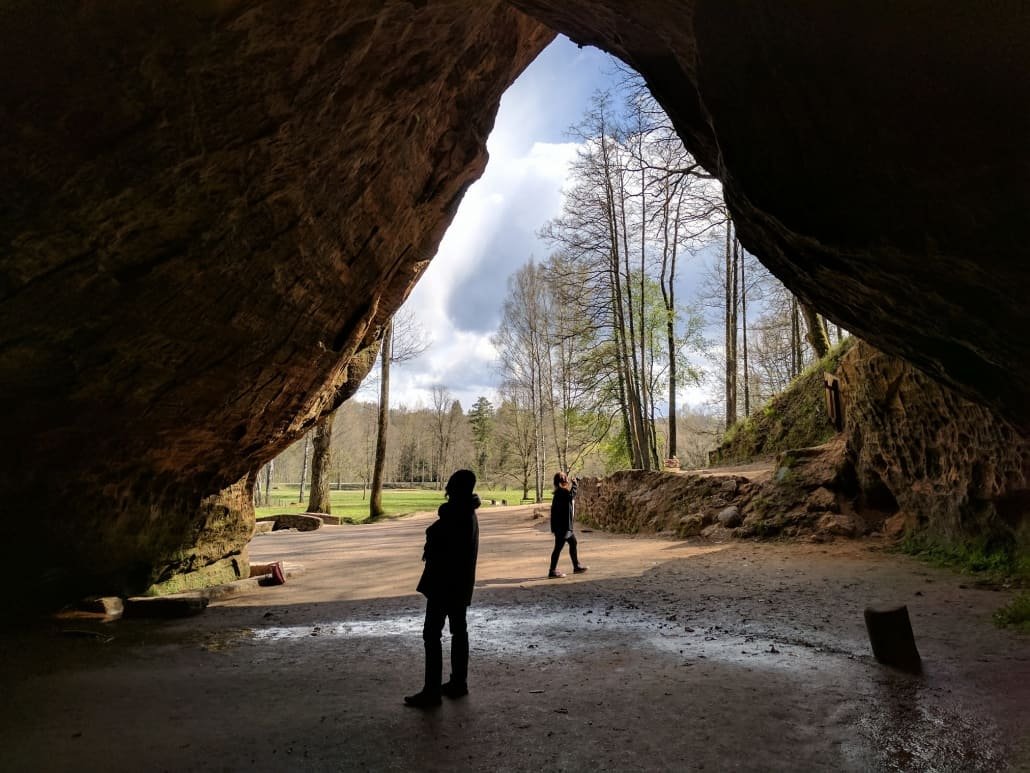
Gutmanis Cave – The Gutmanis Cave is advertised as being the widest and highest cave in the Baltics, being 19 meters deep, 12 meters wide and 10 meters high and is considered the oldest tourist attraction in Latvia. We didn’t find the cave’s dimensions impressive, however, over the centuries, visitors to the cave have left their mark and almost every accessible inch of the cave has some form of historical graffiti and we found this fascinating. The reason for this tradition of tourism is down to local folk legends. One tale tells of the healing properties of the cave’s spring coming from the tears of a chieftain’s unfaithful wife, another tells the story of Maija, the Rose of Turaida, who chose to die in the cave and stay true to her fiancée rather than being defiled by a deserting soldier. The latter tale actually proved to be true, and according to court records, happened in 1620. Whatever the story behind this enchanting cave, it proved to be an interesting stop on the way to Turaida Castle.
Address: Sigulda National Park, Sigulda 2150, Latvia
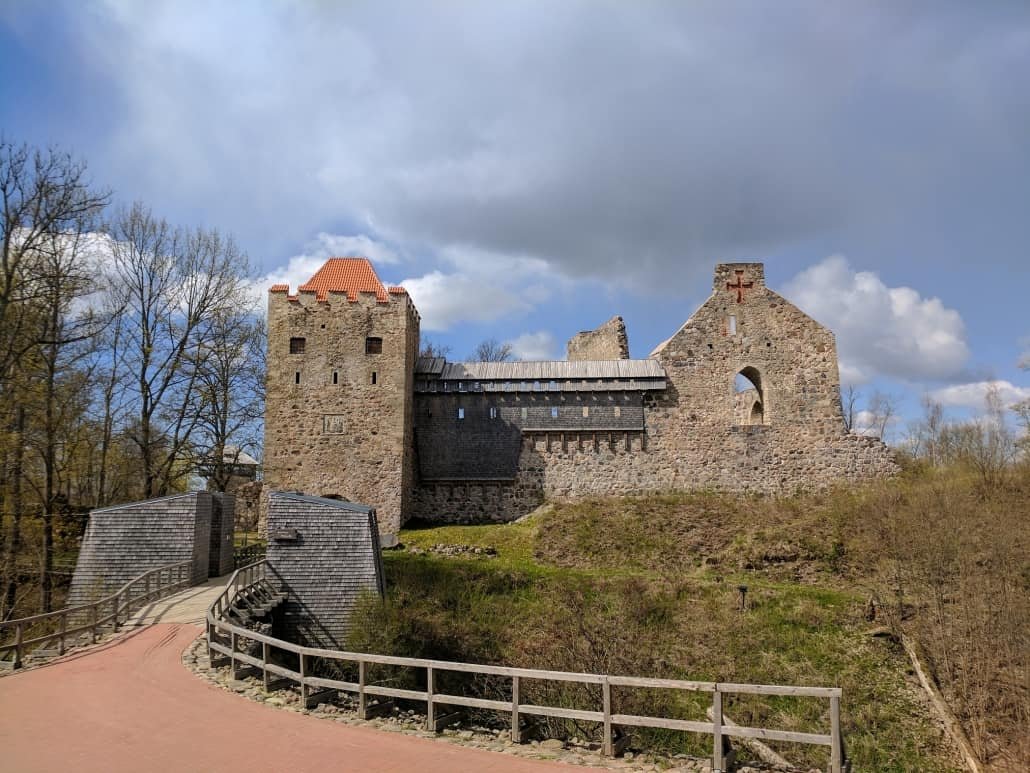
Old Sigulda Castle – Turaida Castle may be the better-known fortress, but across the Gauja River, in the small town of Sigulda, is Old Sigulda Castle. Not quite as impressive, but certainly worth checking out. When you visit Old Sigulda Castle, make sure you walk past the stately New Sigulda Castle so that you can see two castles for the price of one!
Address: Tvaika iela 44, Riga 1005, Latvia

St. John’s Church (Svētā Jāņa baznīca)– The imposing St. John’s Church is hard to miss when visiting Cesis Castle and it is definitely worth inspecting this 13th century church. The church altar painting is the masterpiece of the famous Estonian artist Johann Köhler and you can climb the stairs of the tower and get a panoramic view of the town.
Address: Liela Skolas iela 8, Cesis 4101, Latvia

Christ Transfiguration Orthodox Church (Cēsu Kristus Apskaidrošanas pareizticīgo baznīca) – Although we were unable to enter this church and its opening times were not apparent, this Orthodox Church is well worth seeking out when exploring the park surrounding Cesis Castle. Built in 1842 in a Byzantine style, the church is a little gem.
Address: Palasta 22, Cēsis, Cēsu pilsēta, LV-4101, Latvia
2 Unmissable Attractions of The Zemgale Region:
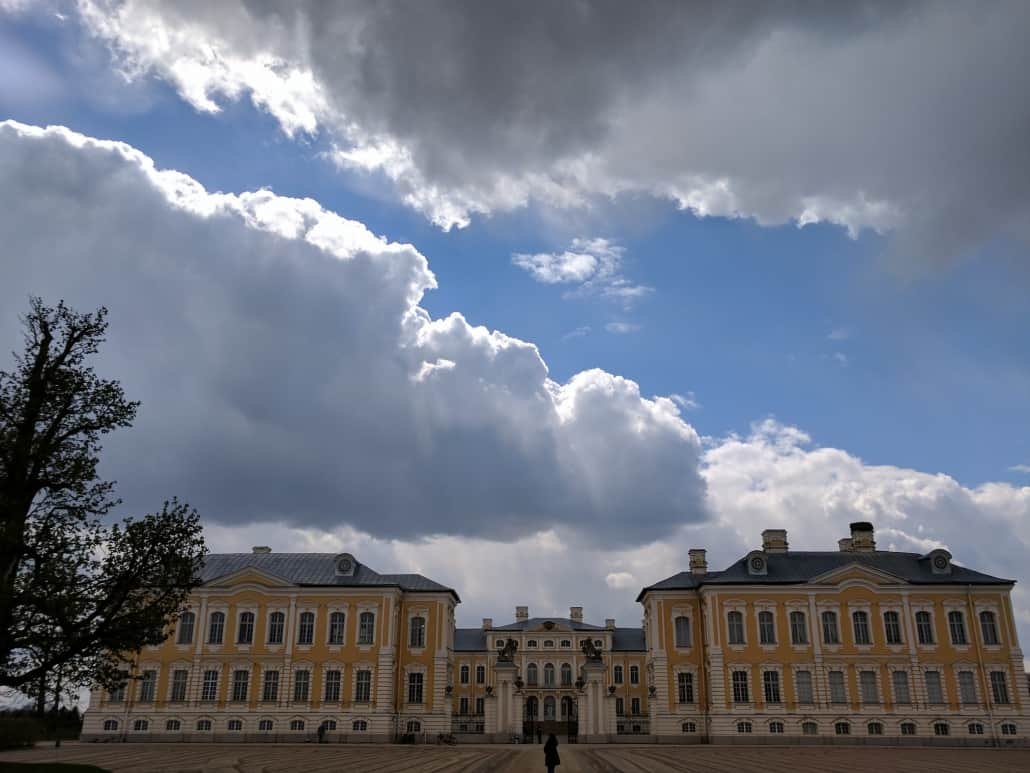
Rundale Palace Museum (Rundales Pils) – When we heard that the gardens of Rundale Palace were comparable to those of the Palace of Versailles, we knew that we had to include this palace in our itinerary. The gardens were indeed charming, although May was probably not the best time to see it in full glory. However, it was the interiors that actually impressed us more – the staterooms (the White Hall, Gold Hall, and Grand Gallery), the Duke’s former living quarters and staterooms and the Duchess’ apartments were all magnificent and well worth seeing. The palace is an impressive size, especially considering location and relative isolation. The original palace was built during the 16th century, but what is seen today was constructed more in the 18th century, with extensive renovations taking place after both world wars. It is worth noting that following our visit we had a lovely traditional meal at Baltā māja, one of the restaurants near the entrance of the palace. There are not many food options around the countryside, at least not until you get to Bauska, so this restaurant was a handy discovery.
Address: Pilsrundale, Bauska 3901, Latvia

Bauska Castle – It seems that we have a great deal to be thankful for when it comes to the Livonian Order. This brotherhood constructed Bauska Castle in the 15th century and is one of many of their outstanding castles that dot the country. The Bauska Castle Museum includes materials obtained in archaeological excavations, as well as furniture, ceramics and art objects from the castle. The picturesque stronghold sits between the Musa and Nemunelis rivers, and if you have time, it is well worth having a walk along these rivers to get the great photo opportunities afforded of the castle.
Address: Pilskalns, Bauska 3901, Latvia
3 Hidden Gems of The Zemgale Region:
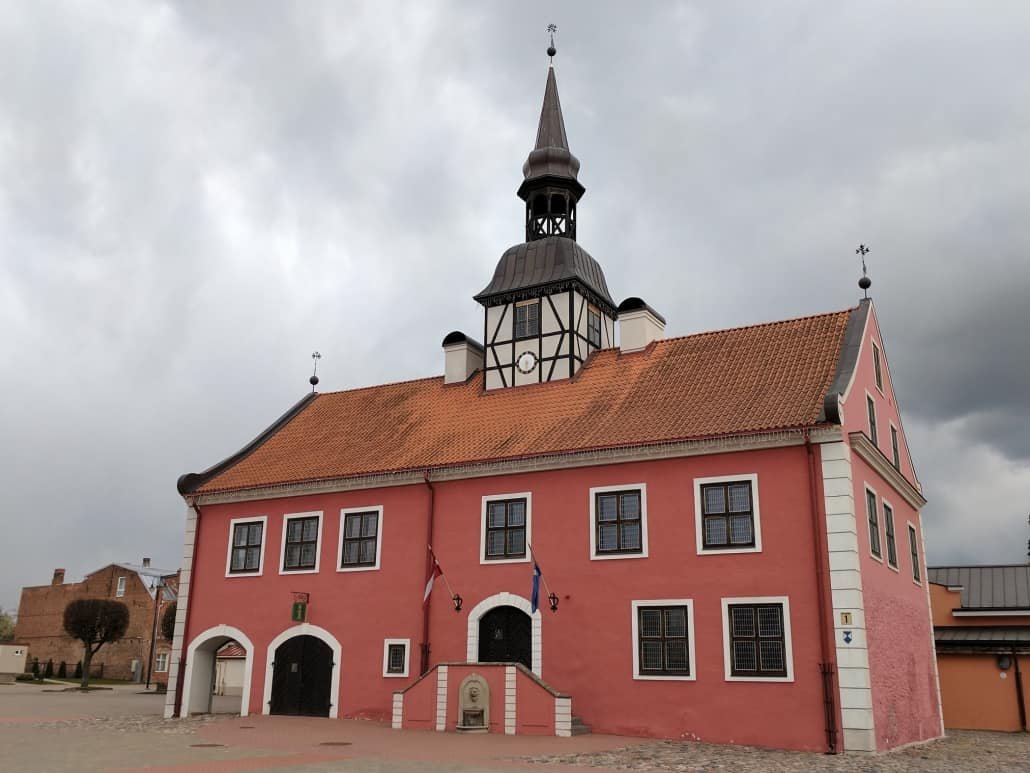
Bauska Town Hall – Bauska Town Hall is a recently rebuilt 17th century town hall building located in the middle of the Bauska Market Square and although we were unable to gain access to the interiors, it was worth a quick diversion to stop and admire.
Address: Ratslaukums 1, Bauska 3901, Latvia

Bauska St. Georgijs the Orthodox Church – On the road into Bauska from the castle, we chanced upon the striking St. Georgijs Orthodox Church. Constructed in 1881, this church is a little gem hidden amongst the urban housing.
Address: Uzvaras iela 5, Bauska, Bauskas pilsēta, LV-3901, Latvia

Siauliai Hill of Crosses – The Hill of Crosses must be one of the most unique places to visit in the world. If you have the use of a rental car when you visit Latvia, you will find it quite easy to get to this site, being only a two-hour drive from the centre of Riga. Siauliai is just over the border into Lithuania, but the crossing between the countries is seamless. This monument is made up of about 100,000 crosses, big and small, plain and ornate, and that number increases daily as pilgrims, including ourselves, bring and plant their own crosses at the site. There is a basic tourist information centre at the site, as well as several merchants selling a range of crosses. It is thought the first crosses were placed on the hill to commemorate the freedom fighters who died during the 1831 rebellion, with more being added after the 1863 rebellion. Eventually, the memorial became so revered that it was visited by Pope John Paul II. A trip to the Hill of Crosses will always stay with you.
Address: Jurgaičiai Village, Meškuičiai Rural Municipality, LT-81439 Šiauliai Region
Hints, Tips and Useful Information:
Respect: Handshaking is customary when meeting someone for the first time. Latvians can be reserved and formal, but nevertheless very hospitable. Latvians are proud of their culture, and visitors should respect this strong sense of national identity.
Electricity: 220 volts AC, 50 Hz. Round two-pin plugs are in use.
Currency: The Euro. Latvia joined the eurozone in January 2014, so no complicated conversions into lats (the previous national currency) are necessary any longer. However, you will find some odd prices quoted as they have been strictly converted from the old lats price. Banks are mainly open from Monday to Friday from 9 am to 5 pm, and it is advisable to exchange foreign currency in advance of visiting many areas of the countryside, as some places will not accept any bank cards. There are cash machines in all the major cities and towns of Latvia. Most of them accept Eurocard, Mastercard, Visa, JCB, Diner’s Club, and American Express credit cards.
Language: Latvian is the official language. Russian, English and German are also widely spoken.
Basic words:
- Thank you – paldies
- Please – lūdzu
- Good morning – labrīt
- Good afternoon -labdien
- Good evening – labvakar
- Yes – jā
- No – nē
Religion: Latvia is mainly Christian, with Lutheran, Roman Catholic and Russian Orthodox the most popular confessions.
Telephone dialing code: +371. To call from Latvia, dial 00 then the country’s code that you are wanting to dial to.
Emergency numbers: 112 (police and fire), 113 (ambulance).
Payphones: phonecards required, which can be purchased at kiosks, post offices and in some shops.
Mobile Telephones: Good coverage with roaming agreements with many international phone companies.
Internet: Can be accessed in several internet cafes in Riga, and in some other towns.
Transport – Buses: Buses, trams and trolley buses are used in Riga. Plastic smart cards (long-term use) and cardboard tickets are available (www.rigassatiksme.lv).
Transport – Taxis: The price of the taxi service will be shown on the outside of the taxi. Taxis are available directly on the street, from a taxi rank, or by ordering one by phone. Most taxis only accept cash.
Transport – Driving: In most cities and towns in Latvia, on working days from 8:00 am to 8:00 pm, you have to pay for parking in the city centre. The cost for car parking is required in advance, using special parking ticket machines or by sms.
Other points to note:
- Drive on the right-hand side of the road.
- A valid driver’s license is required
- Speed limits are usually 50 kph in cities and 90 kph on highways.
- Blood alcohol limit is 0.2-0.5 promiles.
- Headlights must be on and used at all times, day and night.
- Seatbelts are obligatory for drivers and passengers.
Water: Tap water is safe to drink, however, most locals prefer to boil it before drinking.
Shopping: Latvia is known for its amber, smoked (black) ceramics, silver jewellery, mittens, black (rye) bread, Riga Black Balsam herbal liqueur (Melnais Balzams) and Laima chocolates.
Cuisine: Latvian food has Nordic, Russian and German influences. It tends to be rather fat and rich, with main courses often consisting of potatoes, porridges, pancakes, and soups. Smoked bacon, sausage, other pork products are also favourites, as well as smoked and raw fish.
Try the following:
- Maize Zupa(sweet soup made from rye bread)
- BiesuZupa (red beetroot soup)
- Kotletes(meatballs served with potatoes)
- Piragi(bacon and onion wrapped in a thin yeast dough)
- Siļķear biezpienu (herring served with cottage cheese)
- Commorgan-wieders(braised chuck, ground with celery, onions and wrapped in a crepe and resauteed)
- Griki(buckwheat)
- Skabetikaposti (sauerkraut)
- BiezpienaSierins (curd snack made from milk)
- LaimaChocolate
Alcohol Consumption: Alcohol can be purchased from age 18 and over. Note, it is prohibited to be drink form an open bottle in the street.
Smoking: Prohibited in most public buildings and also in parks, squares and beached, except if the places are specially designated for smoking.
Tipping: 10% is acceptable in restaurants and cafes, unless the service has already been included in the bill. Tipping is often given, but is not obligatory, to hotel service staff, taxi cab drivers, and hairdressers.
Vaccinations: Forest ticks can be an issue from May to September, and has the risk of tick-born encephalitis.
- Europe
- Latvia





No Comments